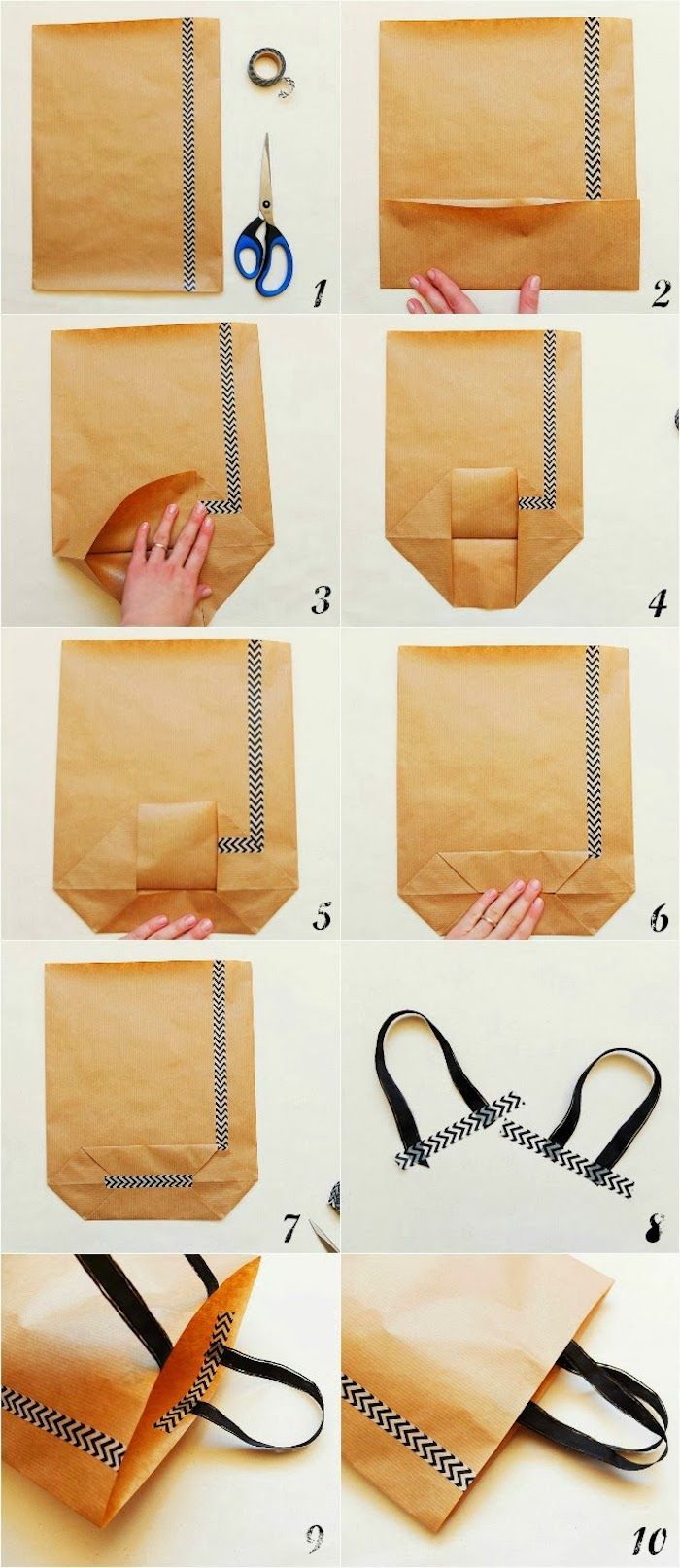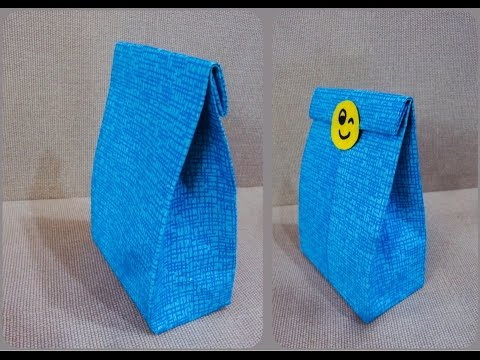Content Menu
● Understanding the Basics of Paper Bags
● Materials You Will Need
● Simple Folded Paper Bag
>> Step-by-Step Instructions
● Origami Paper Bag
>> Step-by-Step Instructions
● Newspaper Bag
>> Step-by-Step Instructions
● Brown Paper Lunch Bag
>> Step-by-Step Instructions
● Tips for Making Durable Paper Bags
● Creative Uses for Paper Bags
● Environmental Benefits of Making Your Own Paper Bags
● Conclusion
● Related Questions
>> 1. What types of paper are best for making glue-free bags?
>> 2. Can I customize my paper bags?
>> 3. How much weight can these homemade bags hold?
>> 4. Are there any other uses for these bags?
>> 5. Can I make larger bags using these methods?
● Citations:
Creating a paper bag without the use of glue is not only an environmentally friendly option but also a fun and creative craft project. This article will guide you through various methods to make paper bags using simple materials and techniques. Whether you need a bag for gifts, groceries, or personal use, these methods will help you craft sturdy and stylish bags without relying on adhesives.

Understanding the Basics of Paper Bags
Before diving into the crafting process, it's essential to understand the basic structure of a paper bag. A typical paper bag consists of:
- Body: The main part of the bag that holds items.
- Bottom: The base that provides stability.
- Handles: Optional features that make carrying easier.
Using folds and cuts, you can create a functional bag that serves its purpose without glue.
Materials You Will Need
To create a paper bag without glue, gather the following materials:
- Paper: You can use various types such as craft paper, old newspapers, or wrapping paper.
- Scissors: For cutting the paper to size.
- Ruler: To measure and ensure even folds.
- Pencil: For marking measurements on the paper.
- Paper clips or string: Optional for securing the bag.
Simple Folded Paper Bag
This method involves straightforward folding techniques to create a basic paper bag.
Step-by-Step Instructions
1. Cut Your Paper:
- Start with a rectangular piece of paper. A common size is 12 inches by 24 inches for a medium-sized bag.
2. Fold the Paper:
- Fold the paper in half lengthwise (12 inches by 12 inches) and crease well.
- Open it back up and fold each side towards the center crease, creating three equal sections (each about 4 inches wide).
3. Create the Bottom:
- Fold about 2 inches from the bottom edge upwards to form the base of your bag.
- Unfold this section and then fold each corner of the bottom section diagonally towards the center crease to create flaps.
4. Final Assembly:
- Fold the bottom section back up and tuck in the flaps you just created.
- Secure with a paper clip or string if desired.
5. Add Handles (Optional):
- If you want handles, cut two strips of paper (about 1 inch wide and 10 inches long) and attach them by punching holes on either side of the top of your bag and threading through.
Origami Paper Bag
Origami techniques can also be used to create beautiful bags without glue.
Step-by-Step Instructions
1. Choose Your Paper:
- Use a square piece of paper (preferably origami paper for aesthetics).
2. Folding Process:
- Fold the square in half diagonally to form a triangle.
- Fold the top point down to meet the base, creating a smaller triangle.
- Fold each side of this triangle towards the centerline, forming a kite shape.
3. Creating the Bag Shape:
- Fold up the bottom point of your kite shape to form a pocket.
- Flip over and fold down the top point slightly to create a flap that will hold your items inside.
4. Final Touches:
- You can leave it as is or decorate it with markers or stickers for personalization.
Newspaper Bag
Using old newspapers is an excellent way to recycle while making functional items.
Step-by-Step Instructions
1. Prepare Your Newspaper:
- Take two sheets of newspaper and place them on top of each other for added strength.
2. Folding Technique:
- Fold one edge over about 2 inches to create a flap at one end.
- Fold up from the bottom about 6 inches to form the body of your bag.
3. Creating Side Folds:
- Fold in each side towards the center (about 2 inches) to give your bag depth.
- Tuck in the corners at the bottom for stability.
4. Securing Your Bag:
- Use paper clips or twine to secure any loose edges if necessary.

Brown Paper Lunch Bag
Another simple way to create a sturdy bag is by using brown kraft paper, commonly found in lunch bags.
Step-by-Step Instructions
1. Select Your Paper:
- Use a piece of brown kraft paper measuring approximately 12 inches by 18 inches.
2. Folding Process:
- Start by folding one short edge down about 2 inches to create a flap at one end.
- Next, fold up from the bottom about 8 inches; this will form your bag's body.
3. Creating Side Folds:
- Fold in both sides towards the center (about 1 inch) to add depth and stability.
- Tuck in any excess at the bottom by folding it under, ensuring that your bag stands upright.
4. Finishing Touches:
- If desired, you can punch holes into the top edges and thread string or ribbon through for handles.
Tips for Making Durable Paper Bags
- Choose thicker paper for added strength; papers like cardstock work well.
- Make precise folds and creases; this ensures your bag holds its shape better.
- Experiment with different sizes and shapes; adjust dimensions based on your needs.
- Decorate your bags with stamps or drawings for a personal touch; consider using stencils for intricate designs.
- Reinforce stress points such as handles or corners with additional folds or layers of paper for extra durability.
Creative Uses for Paper Bags
Once you've mastered making paper bags, consider some creative uses beyond just carrying items:
- Gift Wrapping: Use decorated paper bags as unique gift wrap alternatives. They can be personalized with drawings or messages directly on them.
- Storage Solutions: Use these bags as organizers around your home for items like toys, craft supplies, or office materials. Labeling them can help keep everything tidy.
- Party Favors: Create small bags for party favors at events like birthdays or weddings. Fill them with candies or small gifts that guests can take home.
- Plant Holders: Line your homemade bags with plastic liners and use them as decorative plant holders indoors or outdoors.
Environmental Benefits of Making Your Own Paper Bags
Making your own paper bags has several environmental benefits:
- Reduces Waste: By using recycled materials like newspapers or leftover wrapping paper, you contribute less waste to landfills.
- Sustainable Practice: Crafting your own bags promotes sustainability by encouraging reuse and recycling rather than purchasing new plastic bags that harm wildlife and ecosystems.
- Customizable Options: Homemade bags allow you to choose designs that reflect your style while being mindful of environmental impact compared to mass-produced options.
Conclusion
Making a paper bag without glue is an enjoyable activity that promotes creativity while being eco-friendly. By using simple materials and techniques, you can craft functional bags suitable for various purposes. Whether you opt for a simple folded design, an origami style, or utilize recycled newspapers, these methods provide sustainable alternatives to traditional adhesive methods.
Not only do these homemade bags serve practical purposes, but they also allow individuals to express their creativity while contributing positively to environmental sustainability. As we continue to seek ways to reduce our carbon footprint, crafting reusable items like these will become increasingly valuable in our daily lives.

Related Questions
1. What types of paper are best for making glue-free bags?
- Thicker papers like craft paper or cardstock are ideal as they provide more durability compared to standard printer paper.
2. Can I customize my paper bags?
- Yes! You can decorate your bags using markers, stamps, or stickers after they are assembled.
3. How much weight can these homemade bags hold?
- The weight capacity depends on the type of paper used; generally, thicker papers can hold more weight than thinner ones.
4. Are there any other uses for these bags?
- Besides carrying items, these bags can be used as gift wrap or organizers for small items around your home or office.
5. Can I make larger bags using these methods?
- Absolutely! Simply increase the size of your initial piece of paper while maintaining proportional folds to create larger bags.
Citations:
[1] https://www.youtube.com/watch?v=qwPWW60Hb5Q
[2] https://www.youtube.com/watch?v=DqfjXtI7xdE
[3] https://www.youtube.com/watch?v=dEWaakcwxsg
[4] https://www.bowdabra.com/blog/2021/12/10/how-to-make-a-no-glue-paper-holiday-gift-bag/
[5] https://lekac.com/products/10-common-questions-about-the-kraft-paper-bag
[6] https://www.youtube.com/watch?v=-VSPhOqXWN8
[7] https://www.youtube.com/watch?v=uXtRjPkAHN0
[8] https://www.youtube.com/watch?v=Zddm5527p9k
[9] https://www.youtube.com/watch?v=k_CCIpqV9Bw
[10] https://www.youtube.com/watch?v=4hEOJW4qISk
































